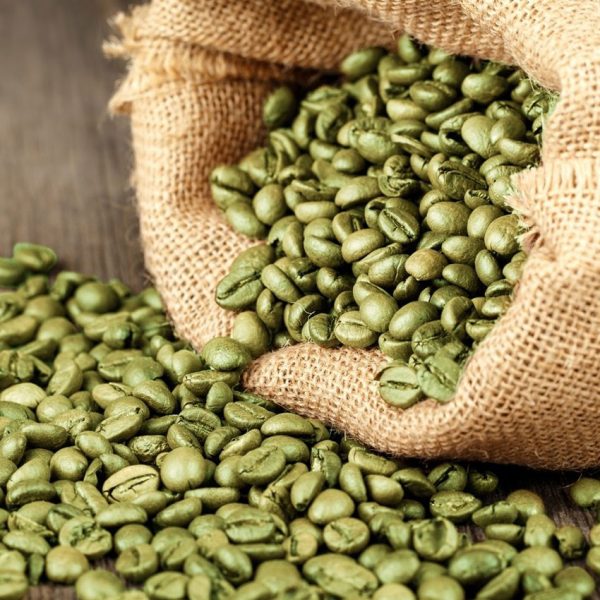Why should the unassuming, raw green bean, the very genesis of your morning ritual, hold such fascination? Because within its verdant shell lies a world of potential, a treasure trove of untapped health benefits and, for the discerning palate, a gateway to a vastly different coffee experience.
The allure of green beans coffee extends far beyond a simple caffeine fix. It's a journey back to the roots, a rediscovery of the unroasted, unadulterated essence of the coffee plant. Before the dark roast, the caramelized sugars, and the familiar aroma, there is the green bean a vibrant seed bursting with chlorogenic acids and a spectrum of other compounds that transform during the roasting process. The green bean experience offers an alternative, a chance to explore coffee in its purest form and to appreciate its nuanced character.
The narrative of green beans coffee has evolved significantly in recent years, fueled by a growing awareness of the health benefits and a surge of interest in natural and minimally processed foods. Where once it was a niche pursuit, the consumption of green beans coffee is increasingly embraced by health-conscious individuals, coffee aficionados seeking new experiences, and those exploring alternative approaches to wellness. The focus is not just on the taste, but also on the potential for improved health and well-being that accompanies this unique beverage.
The concept of green beans coffee challenges conventional notions about coffee. It pushes the boundaries of what is considered coffee by offering a distinct taste, a range of potential health benefits, and an eco-conscious approach to consumption. Understanding the process from the meticulous harvesting of the beans in the lush mountainous regions to the careful preparation of the beverage is essential to appreciate this unique, evolving world of coffee.
Green beans coffee also presents an interesting intersection of sustainability. The beans are generally sourced from coffee-producing countries with a focus on fair trade and environmental sustainability. Choosing green beans can be seen as a nod towards supporting ethical farming practices and promoting conservation efforts. With a move towards conscious consumerism, a growing number of coffee drinkers are taking an interest in the origin, the production methods, and the environmental impact of their daily cup, and green beans coffee offers a more transparent and often, more sustainable, alternative.
The preparation method, also, distinguishes green beans coffee. Typically, green beans are not brewed in the traditional method. Roasting is bypassed entirely, as the emphasis is on preserving the natural compounds. Instead, the beans are often ground and brewed directly into a beverage, or occasionally used as a base for smoothies or other culinary applications. This requires some experimentation, and the end result may be quite different from what one might expect from a regular cup of coffee.
The taste profile of green beans coffee is undeniably unique. It has a vibrant, grassy taste with a mild acidity, distinct from the roasted coffee's richness and bitterness. There may be hints of floral notes or a light vegetal character. The precise flavor can depend on the origin of the beans, their variety, and the brewing process. It is this unique profile that attracts many people, encouraging them to explore coffee beyond the classic taste of a dark roast.
Green beans coffee is also associated with several potential health benefits. The primary compound of interest is chlorogenic acid, a potent antioxidant believed to offer various health advantages. Studies suggest that chlorogenic acid could help with weight management, blood sugar control, and improved cardiovascular health. The impact of this compound on the human body is still being actively researched, but initial findings are promising.
Green beans coffees role in the context of weight loss is frequently discussed. Chlorogenic acids may support the bodys metabolism and hinder glucose absorption. As such, many people have begun incorporating green beans coffee into their diets in an attempt to manage weight more effectively. However, like any dietary strategy, it is important to approach it with a balanced view, including an emphasis on physical activity and other healthy lifestyle choices.
The use of green beans coffee as a dietary supplement is not new. Extract forms have been available in the market for a while. These supplements, usually sold in capsule or powder form, concentrate the beneficial compounds found in the green beans. They offer a convenient way to incorporate chlorogenic acid and other active ingredients without having to brew the beverage.
The origins of green beans coffee can be traced to the regions where coffee is cultivated. The process begins at the coffee farms, where the beans are selected, harvested, and processed. The choice of the bean is of paramount importance, as the origin and the variety will significantly impact the final flavor and the potential health benefits. Ethiopian Yirgacheffe, Sumatran Mandheling, and Colombian Supremo are only a few of the origins that are often favored when preparing green beans coffee. The green beans are often chosen for their unique flavor profiles and their high levels of chlorogenic acid.
The preparation process is a crucial element of green beans coffee. Unlike traditional coffee, green beans are not roasted. The absence of roasting means that the beans natural compounds, particularly chlorogenic acid, are preserved. The method of brewing is vital; it is necessary to find a way to extract the flavor and health benefits of the green beans. Various brewing methods are in play, including grinding and steeping, and sometimes, cold brewing.
The choice of brewing method can also significantly affect the final product. The goal is usually to extract the maximum amount of flavor and compounds. For example, grinding the beans right before use can help with the overall freshness of the beverage. Steeping the grounds in hot water for a specified time is a common technique. The cold brewing method, in which the grounds are steeped in cold water for an extended period, is another option. This method often results in a smoother, less acidic beverage.
The health benefits attributed to green beans coffee are varied and multifaceted. Studies suggest that chlorogenic acids can play a role in regulating blood sugar levels, potentially reducing the risk of type 2 diabetes. Furthermore, antioxidants present in green beans can help defend against oxidative stress, helping to minimize cell damage and bolstering overall health. There is also discussion about the potential impact of chlorogenic acids on cardiovascular health.
The growing popularity of green beans coffee has stimulated a wave of innovation. Companies are constantly working to improve the harvesting, processing, and brewing techniques. From new brewing machines to the development of specialized green beans, the market is always expanding, with the goal of better extraction and a more satisfying flavor.
The use of green beans coffee continues to evolve. One trend involves experimenting with different blends and flavor profiles. Another development is the growing availability of ethically sourced green beans, that allows consumers to make choices based on the origin of the beans, the farming practices, and their potential environmental impact.
Green beans coffee also offers a fascinating alternative for those looking to avoid the negative side effects associated with traditional coffee, such as increased heart rate or jitters. Because it contains less caffeine than roasted coffee, green beans coffee can be an option for sensitive people who still want a coffee-like experience. Also, since it is an unroasted form, the coffee presents a different flavor profile, making it an interesting substitute for people looking to change things up.
The market for green beans coffee and related products is growing rapidly. As more people discover the potential benefits and distinct flavors of green beans coffee, demand is increasing. This growth is fueled by the availability of premium green beans, the increased popularity of health foods, and the rising demand for sustainable and ethically sourced products.
Green beans coffee represents a fascinating journey back to the origin, with a blend of taste, health, and sustainability. Whether the interest lies in the quest for health benefits, the quest for a unique flavor profile, or the desire to support ethical and environmentally friendly practices, green beans coffee offers an appealing alternative to the established ways of enjoying coffee.
This is more than just a beverage; its an exploration into the very soul of the coffee plant. The benefits of green beans coffee go beyond a simple caffeine kick. Its an adventure into an uncharted area of coffee, inviting you to explore the distinct, nuanced, and potentially health-promoting properties of this exceptional beverage.
In conclusion, green beans coffee is not just a fad; it's a testament to the enduring appeal of the coffee plant and a conscious effort to understand our food sources in their natural form. The future of green beans coffee is bright, with continued innovation, a deeper appreciation for its health benefits, and a growing community of aficionados committed to this journey of discovery.
Here is a comparison between green beans coffee and roasted coffee that is very useful to know.
| Feature | Green Bean Coffee | Roasted Coffee |
|---|---|---|
| Processing | Unroasted, minimally processed | Roasted at high temperatures |
| Flavor Profile | Grassy, vegetal, mild acidity | Rich, complex, bitter, caramelized |
| Caffeine Content | Generally lower | Generally higher, varies with roast level |
| Chlorogenic Acid | High levels | Levels reduced during roasting |
| Acidity | Generally lower | Can vary, depends on roast |
| Health Benefits | Potential weight management, blood sugar control, antioxidant properties | Antioxidant properties |
| Preparation | Grinding and brewing without roasting, cold brew | Various methods: drip, French press, espresso |


